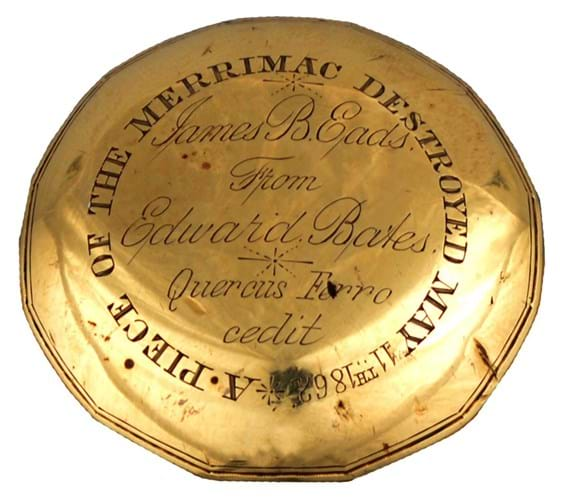The battle of Hampton Roads was fought over two days in March 1862. On May 8, the Confederate ironclad ram Virginia - modified from the remains of the scuttled Union ship, the Merrimack – wreaked havoc among the wooden hulled Union warships that were blockading southern ports.
On the following day, her brief reign of terror was brought to an end, as she was confronted by the Union’s own purpose designed ironclad, the Monitor with her single revolving turret barely raised above the waterline. Although the furious fire fight (the first ever between two ironclad warships) was to prove inconclusive, it would have major ramifications for naval history. Hampton Roads essentially sealed the demise of the wooden hull.
The cane comes by descent through a branch of the Eads family. James Buchanan Eads (1820-87), a civil engineer and builder of the Eads Bridge over the Mississippi, was also a prolific builder of ironclad gunboats for the Union’s struggle.
The Edward Bates (1793-1869) mentioned in the inscription was Abraham Lincoln’s attorney general and Eads’ close friend. His diary entry for May 13, 1862 includes the following passage: “Saw the wrecks of the Cumberland the Congress, and the Merrimack. Admiral Goldsborough gave me a stick of white oak, large enough to be turned into a heavy cane, sawn from a beam of the Merrimack”. It seems this is how the cane came into being - just days after the Merrimack / Virginia was scuttled by the retreating Confederates. The Latin legend Quercus Ferro Cedit (Oak yields to iron) hint that it was intended as a memento for a man who had expended great energy in developing the new breed of fighting vessel.
Woolley and Wallis’ arms and militaria specialist Ned Cowell expects it to bring plenty of interest with the estimate set at £3000-5000 on May 3.







